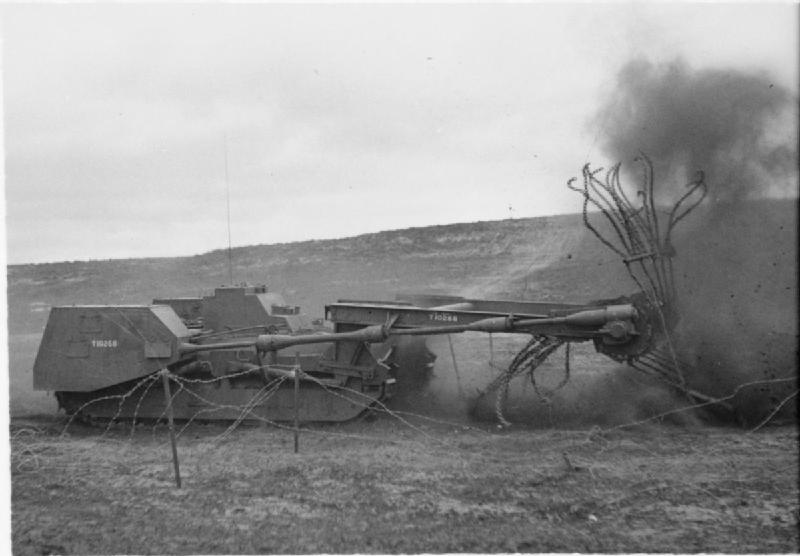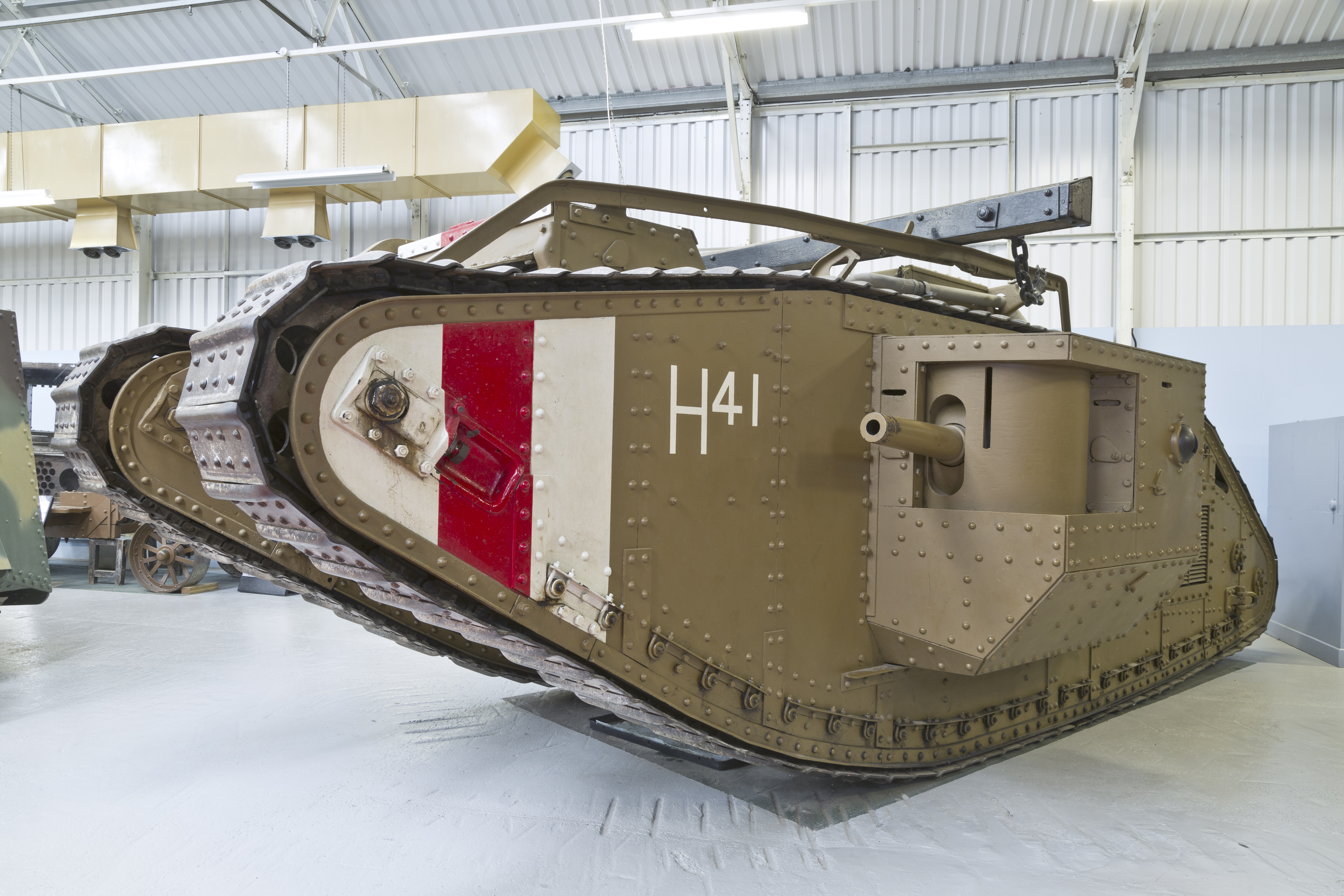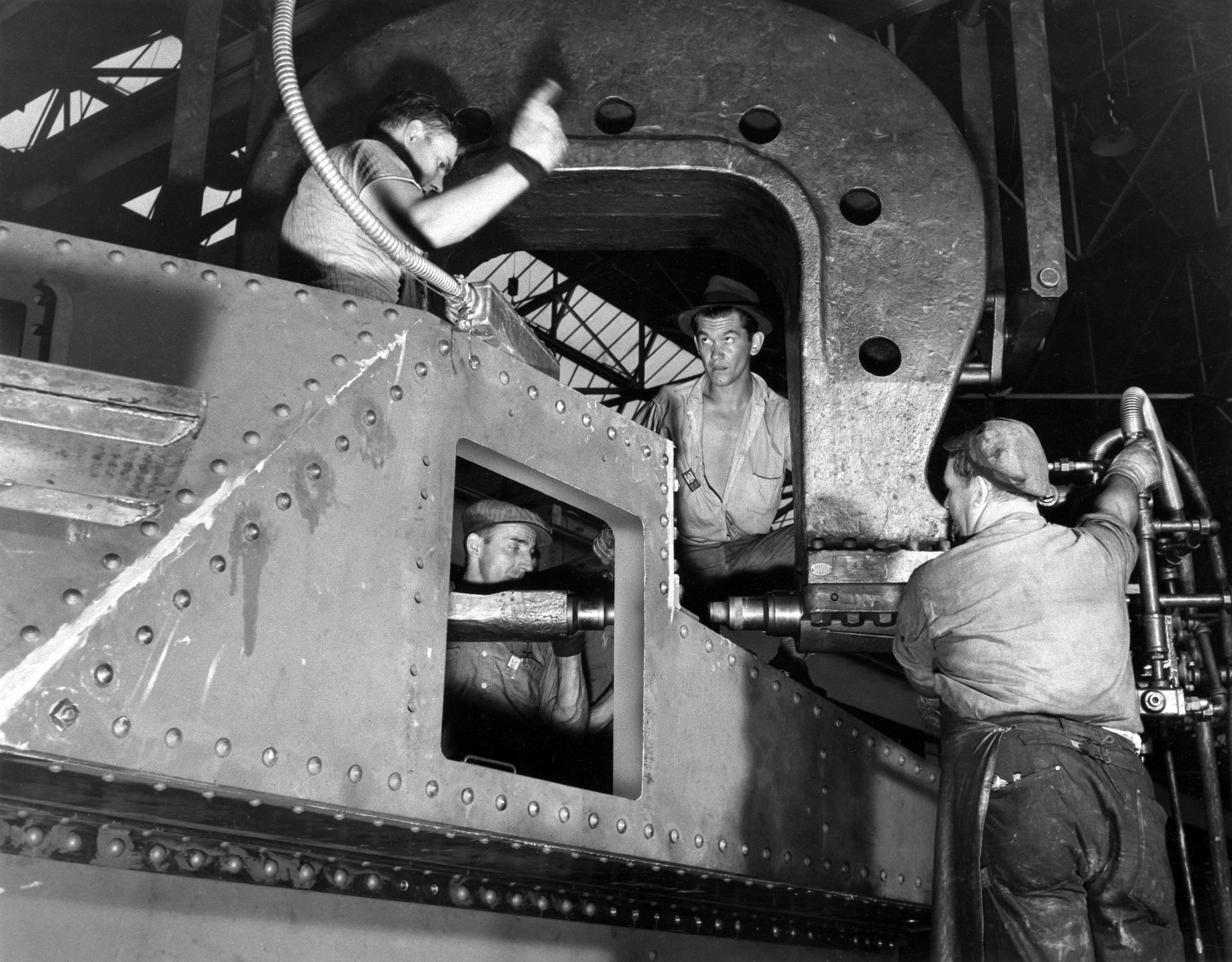|
35th Armoured Brigade (United Kingdom)
The 35th Armoured Brigade was an armoured brigade formation of the British Army, formed during the Second World War. The brigade was never deployed in combat, remaining in the UK to act as a home defence and training unit, and provided replacements for other formations. Unit history The unit was formed in the UK on 1 December 1941 when the 225th Independent Infantry Brigade was converted to armour and renamed the 35th Army Tank Brigade as part of Northern Command. On 1 January 1942, its units were renamed, with the 10th Battalion, King's Own Royal Regiment (Lancaster) becoming the 151st Regiment Royal Armoured Corps, the 11th Battalion, King's Regiment (Liverpool) becoming the 152nd Regiment Royal Armoured Corps, and the 15th Battalion, Durham Light Infantry becoming the 155th Regiment Royal Armoured Corps. They were equipped with the Canal Defence Light, a Matilda II or Churchill (and later M3 Grant) tank, fitted with a turret containing a 13 million candlepower (12.8 milli ... [...More Info...] [...Related Items...] OR: [Wikipedia] [Google] [Baidu] |
British Army
The British Army is the principal land warfare force of the United Kingdom, a part of the British Armed Forces along with the Royal Navy and the Royal Air Force. , the British Army comprises 79,380 regular full-time personnel, 4,090 Gurkhas, and 28,330 volunteer reserve personnel. The modern British Army traces back to 1707, with antecedents in the English Army and Scots Army that were created during the Restoration in 1660. The term ''British Army'' was adopted in 1707 after the Acts of Union between England and Scotland. Members of the British Army swear allegiance to the monarch as their commander-in-chief, but the Bill of Rights of 1689 and Claim of Right Act 1689 require parliamentary consent for the Crown to maintain a peacetime standing army. Therefore, Parliament approves the army by passing an Armed Forces Act at least once every five years. The army is administered by the Ministry of Defence and commanded by the Chief of the General Staff. The Brit ... [...More Info...] [...Related Items...] OR: [Wikipedia] [Google] [Baidu] |
World War II
World War II or the Second World War, often abbreviated as WWII or WW2, was a world war that lasted from 1939 to 1945. It involved the vast majority of the world's countries—including all of the great powers—forming two opposing military alliances: the Allies and the Axis powers. World War II was a total war that directly involved more than 100 million personnel from more than 30 countries. The major participants in the war threw their entire economic, industrial, and scientific capabilities behind the war effort, blurring the distinction between civilian and military resources. Aircraft played a major role in the conflict, enabling the strategic bombing of population centres and deploying the only two nuclear weapons ever used in war. World War II was by far the deadliest conflict in human history; it resulted in 70 to 85 million fatalities, mostly among civilians. Tens of millions died due to genocides (including the Holocaust), starvation, ma ... [...More Info...] [...Related Items...] OR: [Wikipedia] [Google] [Baidu] |
43rd Royal Tank Regiment
The 43rd (6th (City) Battalion, The Royal Northumberland Fusiliers) Royal Tank Regiment (43 RTR) was an armoured regiment of the British Army's Royal Armoured Corps that tested and demonstrated specialised Armoured Fighting Vehicles during World War II. Origin and training As part of the rearmament of the British Army before World War II, the 6th Battalion Royal Northumberland Fusiliers, a Territorial Army infantry battalion, was converted to the armoured role on 1 November 1938, under the designation 43rd (6th City) Battalion, The Royal Northumberland Fusiliers, Royal Tank Regiment, or '43 RTR' for short. During 1939, it also formed 49th Royal Tank Regiment as a duplicate regiment. The regiments shared St George's Drill Hall in Newcastle upon Tyne as their depot. Both regiments were part of 25th Army Tank Brigade. At the end of May 1940, with the British Expeditionary Force being evacuated from Dunkirk and the imminent threat of German invasion of England, 25th Army Tank Brigad ... [...More Info...] [...Related Items...] OR: [Wikipedia] [Google] [Baidu] |
79th Armoured Division
The 79th Armoured Division was a specialist armoured division of the British Army created during the Second World War. The division was created as part of the preparations for the Normandy invasion on 6 June 1944, D-Day. Major-General Percy Hobart commanded the division and was in charge of the development of armoured vehicles that were solutions to problems of the amphibious landing on the defended French coastline; these unusual-looking tanks it developed and operated were known as "Hobart's Funnies". They included tanks that floated, could clear mines, destroy defences, carry and lay bridges, and roadways. The practical use of these specialist tanks was confirmed during the landings on the beaches. Its vehicles were distributed as small units across the divisions taking part in the landings and subsequent operations. The division remained in action during the North-west European Campaign, providing specialised support during assaults to the 21st Army Group and, occasionally ... [...More Info...] [...Related Items...] OR: [Wikipedia] [Google] [Baidu] |
25th Army Tank Brigade
The 25th Army Tank Brigade was an armoured brigade formation of the British Army that was active before and during the Second World War. It served with the British First Army and the British Eighth Army during the battles in North Africa and Italy. History The unit was formed on 3 September 1939 as a 2nd Line Territorial Army Tank Brigade, but had very few tanks. On 28 May 1940, it was converted to the 2nd Motor Machine Gun Brigade in recognition of this lack of tanks, but converted back to an Army Tank Brigade on 10 December 1940. It was redesignated the 25th Tank Brigade on 1 June 1942. It fought in Tunisia under the British First Army and in the Italy as part of the British Eighth Army. Commanding officers * Brig. T.D. Murray * Brig. R.H. Maxwell * Lieut. Col. D. Dawnay (acting) * Brig. James Noel Tetley * Brig. E.W.H. Clarke Order of battle * 43rd Royal Tank Regiment (until 28 May 1940, rejoined 27 April, left 17 October 1941) * 49th Royal Tank Regiment (until 28 May ... [...More Info...] [...Related Items...] OR: [Wikipedia] [Google] [Baidu] |
Combined Arms Research Library
The Combined Arms Research Library (CARL) at Fort Leavenworth, Kansas is a United States Army library that supports the United States Army Command and General Staff College. Its collection of over 300,000 books covers all aspects of military science: joint and combined operations; tactics and doctrinal development; leadership, intelligence, weapons, equipment, and training. The Archives and Special Collections house a unique collection of over 200,000 items and the documents collection consists of another 250,000. Each year, the CARL reference staff answers some 30,000 queries for soldiers, faculty and staff at Fort Leavenworth, Kansas and throughout the world via the Defense Digital Library Reference Service. Scholars, writers and the DoD community use the Combined Arms Research Library's archival materials, extensive research materials, and historical documents. The Combined Arms Research Library is one of the largest and most well respected libraries in the Army and was named th ... [...More Info...] [...Related Items...] OR: [Wikipedia] [Google] [Baidu] |
The War Illustrated
''The War Illustrated'' was a British war magazine published in London by William Berry (later Viscount Camrose and owner of ''The Daily Telegraph''). It was first released on 22 August 1914, eighteen days after the United Kingdom declared war on Germany, and regular issues continued throughout the First World War. The magazine was discontinued after the 8 February 1919 issue, but returned 16 September 1939 following the start of the Second World War. 255 issues were published over the course of the Second World War before the magazine permanently ceased production on 11 April 1947. Background The magazine offers a pictorial record of both World War I and World War II and includes numerous maps, photographs and illustrations, and the work of war artists, weekly reporting, and editorials on the conduct, events, and consequences of global conflict. Subtitled "A Pictorial Record of the Conflict of the Nations", ''The War Illustrated'' was at first sensationalistic and patriotic. ... [...More Info...] [...Related Items...] OR: [Wikipedia] [Google] [Baidu] |
The Tank Museum
The Tank Museum (previously The Bovington Tank Museum) is a collection of armoured fighting vehicles at Bovington Camp in Dorset, South West England. It is about north of the village of Wool and west of the major port of Poole. The collection traces the history of the tank. With almost 300 vehicles on exhibition from 26 countries it is the largest collection of tanks and the third largest collection of armoured vehicles in the world.The ''Musée des Blindés'' in France has a collection of 880 armoured vehicles, although it includes fewer tanks than Bovington. It includes Tiger 131, the only working example of a German Tiger I tank, and a British First World War Mark I, the world's oldest surviving combat tank. It is the museum of the Royal Tank Regiment and the Royal Armoured Corps and is a registered charity. History The writer Rudyard Kipling visited Bovington in 1923 and, after viewing the damaged tanks that had been salvaged at the end of the First World War, recommended ... [...More Info...] [...Related Items...] OR: [Wikipedia] [Google] [Baidu] |
Candela
The candela ( or ; symbol: cd) is the unit of luminous intensity in the International System of Units (SI). It measures luminous power per unit solid angle emitted by a light source in a particular direction. Luminous intensity is analogous to radiant intensity, but instead of simply adding up the contributions of every wavelength of light in the source's spectrum, the contribution of each wavelength is weighted by the standard luminosity function (a model of the sensitivity of the human eye to different wavelengths). A common wax candle emits light with a luminous intensity of roughly one candela. If emission in some directions is blocked by an opaque barrier, the emission would still be approximately one candela in the directions that are not obscured. The word ''candela'' is Latin for ''candle''. The old name "candle" is still sometimes used, as in ''foot-candle'' and the modern definition of ''candlepower''. Definition The 26th General Conference on Weights and Measures (C ... [...More Info...] [...Related Items...] OR: [Wikipedia] [Google] [Baidu] |
Candlepower
Candlepower (abbreviated as cp or CP) is a unit of measurement for luminous intensity. It expresses levels of light intensity relative to the light emitted by a candle of specific size and constituents. The historical candlepower is equal to 0.981 candelas. In modern usage, ''candlepower'' is sometimes used as a synonym for ''candela''. History The term candlepower was originally defined in the United Kingdom, by the Metropolitan Gas Act 1860, as the light produced by a pure spermaceti candle that weighs and burns at a rate of . Spermaceti is a material from the heads of sperm whales, and was once used to make high-quality candles. At the time the UK established candlepower as a unit, the French standard of light was based on the illumination from a Carcel burner. They defined the unit was that illumination that emanates from a lamp burning pure colza oil (obtained from the seed of the plant '' Brassica campestris'') at a defined rate. Ten standard candles equaled about one Car ... [...More Info...] [...Related Items...] OR: [Wikipedia] [Google] [Baidu] |
M3 Lee
The M3 Lee, officially Medium Tank, M3, was an American medium tank used during World War II. The turret was produced in two forms, one for US needs and one modified to British requirements to place the radio next to the commander. In British Commonwealth service, the tank was called by two names: tanks employing US pattern turrets were called "Lee," named after Confederate general Robert E. Lee, while those with British pattern turrets were known as "Grant," named after Union general Ulysses S. Grant. Design commenced in July 1940, and the first M3s were operational in late 1941. The US Army needed a medium tank armed with a 75mm gun and, coupled with the United Kingdom's immediate demand for 3,650 medium tanks, the Lee began production by late 1940. The design was a compromise meant to produce a tank as soon as possible. The M3 had considerable firepower and good armor, but had serious drawbacks in its general design and shape, including a high silhouette, an archaic sponson ... [...More Info...] [...Related Items...] OR: [Wikipedia] [Google] [Baidu] |
Churchill Tank
The Tank, Infantry, Mk IV (A22) Churchill was a British infantry tank used in the Second World War, best known for its heavy armour, large longitudinal chassis with all-around tracks with multiple bogies, its ability to climb steep slopes, and its use as the basis of many specialist vehicles. It was one of the heaviest Allied tanks of the war. The origins of the Churchill's design lay in the expectation that war in Europe might be fought in conditions similar to those of the First World War, and thus emphasised the ability to cross difficult ground. The Churchill was hurried into production in order to build up British defences against a possible German invasion. The first vehicles had flaws that had to be overcome before the Churchill was accepted for wide use. After several Marks (versions) had been built, a better-armoured specification, the Mark VII, entered service with the British Army. The improved versions performed well in the later stages of the war. The Churchil ... [...More Info...] [...Related Items...] OR: [Wikipedia] [Google] [Baidu] |







